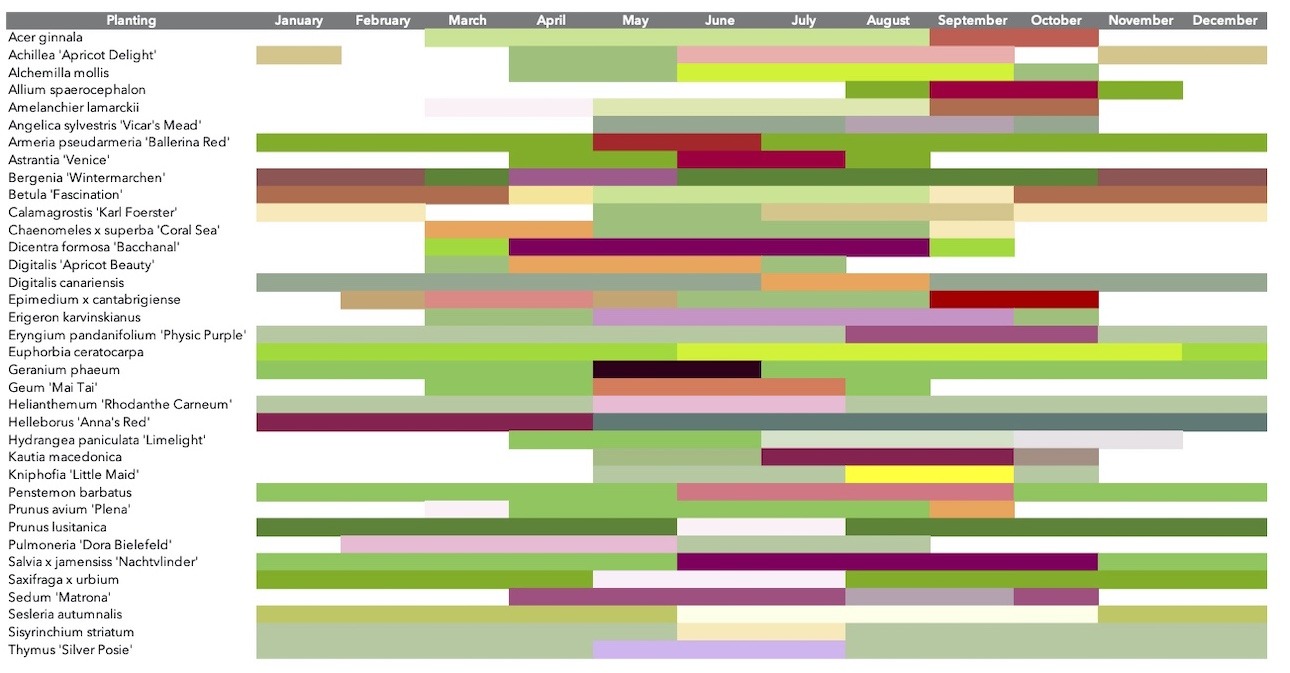This week's blog post is brought to you by the talented landscape designer, Zaidée Penhaligon, with whom we work regularly with. Read on to discover more about her expertise and insights into creating the perfect modern garden design.
Your stunning new home has been built and furnished, and now you’re looking at the blank slate of your garden and wondering what to plant. Or perhaps you’ve even chosen a few things that looked great in the garden centre, but are failing to thrive once you get them home. This is where a few simple tips can help you design a modern garden paradise and not a disappointing failure.
Aspect
'Aspect” is the way your garden faces and is a key factor when thinking of ideas for modern gardens. Is it north, south, east, or west? This will provide vital clues as to where you will get the most sun, pockets of shade, and the prevailing wind. It’s a good idea to look at your garden over the course of the day, and ideally through the seasons, to see where your sunniest and shadiest spots are, as this will make perhaps the biggest difference as to what to plant.
Sun loving plants such as Lavender, Irises, Echinacea and Helenium will grow leggy and ultimately die if placed in deep shade, and shade loving plants such as Hostas, Ferns, Anemones and Hellebores will get scorched in full sun.
Prevailing winds in the UK blow from the south west, and can be very strong here in Cornwall. If you know you have an exposed, windy garden it’s worth planting a windbreak of tough shrubs and trees such as Eleagnus, Blackthorn, Pine or Alder. This will reduce wind speed, which will increase the number of species you are able to grow in your garden, and also make it a nicer place to sit in, as well as potentially saving you money on your heating bills.

Soil type
Soil science is a fascinating topic, and you can get very cheap soil pH tests if you are interested in looking into this further. There are even sites where you can send off samples for full professional testing, try the service from RHS.
However for the average gardener a little basic detective work is all you need to succeed with planting.
When you dig into your soil a couple of inches under the surface, what texture is it?
-
If it is very dry and crumbles into sand or grit, your soil type is sandy. These soils are very free draining and tend to be acidic. Spread an annual organic mulch to improve the water retention and fertility of the soil, and be aware you will have to water more in these soils. Mediterranean plants do well including Lavender, Santolina, Geranium and Verbena.
-
If it sticks together and you can form it into a sausage shape, your soil type is clay. These soils can be water saturated in winter, and dry out completely in summer. They also tend to be very fertile and rich in nutrients. It's best to avoid digging, as this can increase compaction. If you're unsure what to plant for optimal growth - roses, fruits and vegetables, Hydrangeas and Acers do well in clay soils.
-
Chalky soils are not usually found in Cornwall, being more prevalent in the south east of the UK. You can test them by placing in a jar of vinegar: if it froths then it contains chalk or limestone. These soils are usually free draining and low in fertility, mulching with organic matter can improve this. Meadow and Prairie plants can do really well here, try Dianthus, Centaurea, Sedum and Euphorbia.
What other plants are thriving around your garden?
-
If your garden is surrounded by heathers, pines, rhododendrons and camellias it is likely you have acidic soil.
-
What colour are the hydrangeas around you? Hydrangeas are unique in that the pH of the soil changes the colour of their flowers: blue for acidic, and pink for alkaline.

Season of interest
Will you be using the garden more in summer, or do you want it looking lovely when the grandkids come to stay at Easter? Do you take a month away every August? Do you want to bring cut foliage inside to decorate the house at Christmas? Is it important to you to provide food for pollinators as long as possible? Answering these questions will help work out when you need plants to be putting on a show. I like to make a spreadsheet of when plants flower throughout the year to make sure there is always something performing well. Here are some tips for year-round interest:
-
Evergreen plants are the structure of your garden, start here and you’ll have a beautiful space all year. Clipped yew will look great with deciduous trees chosen for their beautiful bark or stem colour such as Betula and Cornus. And you get some lovely scented flowers this time of year, think Sarcococca, Daphne, and Hamamelis.
-
Bulbs such as snowdrops, daffodils, tulips and cyclamen often function as the first harbinger of spring and with planning you can have blooms from December to April.
-
Some plants will bloom all summer long: choose repeat flowering roses, Salvia, hardy Geraniums, Verbena bonariensis, and most daisies.
- Autumn has the potential for some stunning displays. Think about adding trees with good autumn colour and then add late blooming Asters, Anemones, Agastache and Eryngium.

There’s always something new to learn in the world of horticulture, and if you are interested in that it will enhance your planting and garden design skills. However I’m also a firm advocate for trying new things: planting is an art as well as a science. You will no doubt have plant failures (something that is common even for professionals as there are so many aspects to gardening) but you can also have successes beyond your dreams when things really take off.
For more information on how to make the most of your garden, ZaidéeI can provide guidance from planting advice to full garden master planning and planning permission. Get in touch for a friendly chat.



